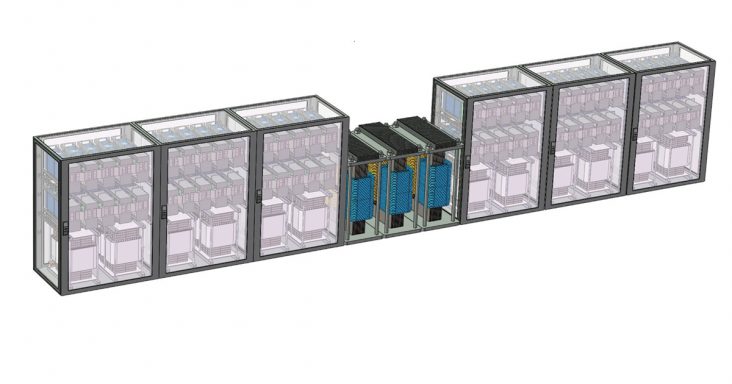UA team to construct prototype transformer
by January 14, 2019 1:21 pm 900 views

NextWatt LLC of Chicago, a power electronics technology company, is working to design and build a next-generation power substation, and faculty and staff at the University of Arkansas will build transformers for the project.
Faculty and staff of the University of Arkansas and its National Center for Reliable Electric Power Transmission at the Arkansas Research & Technology Park in south Fayetteville are working with Chicago-based NextWatt LLC to design and build the next generation of utility substation transformers.
The U.S. Department of Energy recently announced NextWatt, a power electronics technology company, would receive a $1.5 million research and development grant, and the UA was named as one of the partners in the $1.87 million project to design, build and test a modular, low-cost high-frequency-link silicon carbide transformer. The design for a 100-megavolt amp, 115-kilovolt high-frequency-link large power transformer would include energy-conversion efficiency of 99%, reduce the volume and weight in regard to traditional low-frequency large power transformers, and a 50% decrease in the number of devices related to state-of-the-art solid-state transformers.
Juan Carlos Balda, head of the department of electrical engineering at the University of Arkansas, is one of at least a team of four at the UA who are working on the project.
“The main idea of the Department of Energy is to decrease the time that it takes to bring back the electricity to an area after a natural disaster. Could be a tornado. Could be a hurricane,” Balda said.
The first phase of the project was completed in December 2017 after about one year, and it was approved earlier this year. Work included a paper design and a low-power prototype.
The second phase is expected to be completed over two years, once work starts, which could be sometime in early 2019. The Department of Energy and NextWatt are negotiating the contract terms, and the work would include building a full-size prototype, including 12 transformers and 12 inductors, Balda said.
Along with the UA, other project partners include Silicon Power Corp., University of Illinois at Chicago, Arkansas Electric Cooperative Corp. and Con Edison.
